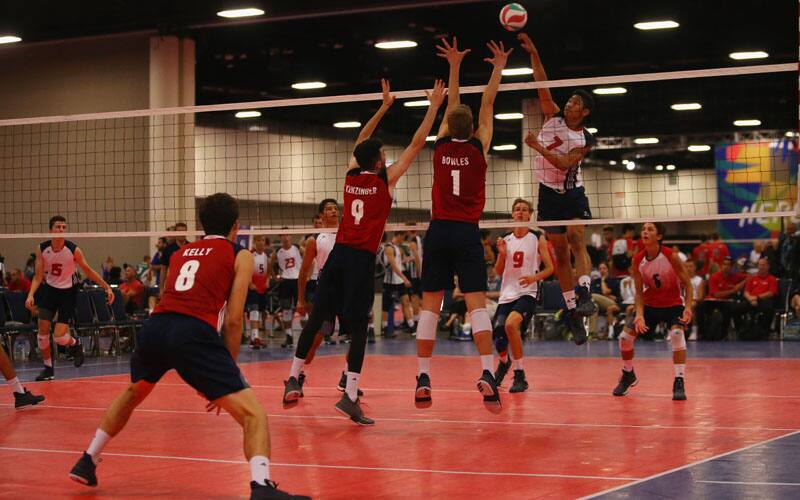
FORT LAUDERDALE, Fla. – How do you get noticed at a big, showcase event like the USA Volleyball High Performance Championships with 18 courts, 1,700 players? What have those coach evaluators been looking for during practice and during competition.
Three big-time coaches gave their insights.
Ken Shibuya
Ken Shibuya is a mentor coach in the HP program; he is also the associate head coach at Stanford.
So how does somebody stand out here?
“I think the ones that stand out are actually pretty obvious. The ones that jump the highest, hit the hardest, play a really nice brand of volleyball in the back court, they’re dynamic … and you can tell. You see everyone at that court. There’s three of four deep in fans cheering them on.
Since 2010, Shibuya has been the head coach of the USA Boys Select camp at HPCs, leading a group comprised of the 600 best U.S. prospects under age 16 and managing 10-12 elite coaches from across the nation.
“I actually think it’s the ones that the coaches think there’s some potential that might be a little bit hidden,” he said. “We keep an eye on them. We’re looking for development. At our age, we’re with the Select; we have 15 and 16-year-olds. It’s hard to predict the future.
“So we want to keep encouraging all them to strive as hard as possible, some will grow really, really big, others will get stronger, others will just get to be a complete volleyball player.
“Our group of boys coaches has been around together; it’s a group that’s collaborated a lot. We all have some of the same ideas. We talk a lot, a lot and we’ll talk even after this event about what kids are doing and how their progressing.”
Kris Berzins
Loyola University’s Kris Berzins is the head coach of the Select A1 Program, the top program for Under-17 Boys in the pipeline. From 2013-15, he served as an assistant coach with the U.S. Boys’ Youth National Team and helped guide the team to a gold medal at the 2014 NORCECA Boys’ Under-19 Continental Championship and a seventh-place finish at the 2015 FIVB Boys Under-19 World Championships in Argentina, the best finish ever for Team USA at that event.
He knows what a good player is and what a good team needs. His tip is this, be mindful of how you treat the people around you.
“I think sometimes some of the things that the kids look over a little bit is their interaction with their parents, their interaction with their coaches and their interactions with their teammates and understanding that that is as much part of an evaluation process as how high they touch, how well they play the game, but you’ve got to be a good teammate.”
Divisions
- Women’s International Junior
- Girls International Youth
- Girls National Youth
- Girls National Select
- Girls Future Select
- Boys International
- Boys National
- Boys Regional
Teams
- 1,700 players on 130 teams from five nations … boys and girls (13-to-18-years-old)
- (U.S., Canada, New Zealand, Bermuda and Peru)
- 75 Region teams from 21 RVAs
- 28 USAV HP Teams
- 20 International Club Teams
- 6 National Teams (2-Canada, 2-New Zealand, 1-Bermuda, 1-USA)
Gary Sato
Gary Sato, current USC men’s assistant coach, was an assistant coach on three U.S. Olympic teams, including the 1988 gold-medal winning men’s team. He was the head coach of the U.S. Boys Youth National team that won silver at the 2010 NORCECA Boys Youth Continental Championship.
“One of the things that the HP program provides is the opportunity to train the whole group of kids together, so we get an opportunity to see how they interact with one another and the staff, handling the conditions of travel, staying in a different environment … those things are really important,” said Sato. “We also get to see the competition and see if they can maintain composure and how well they compete.”
The bottom line … helping these players reach their potential and helping Team USA.
“We’re all competitors in the college world, but we are so passionate about our side of the sport, the growth of it, and we all want to see the USA Senior National Team do well. We want to drive that growth,” said Shibuya.
“We’re all in this together.”
